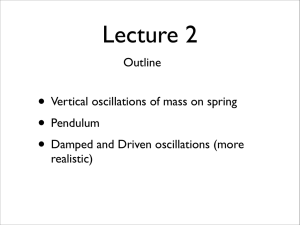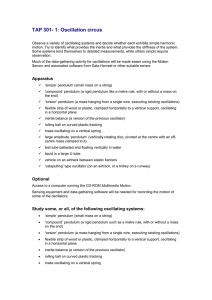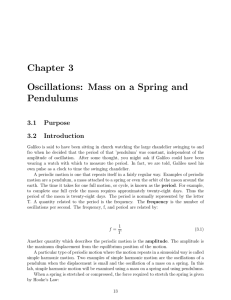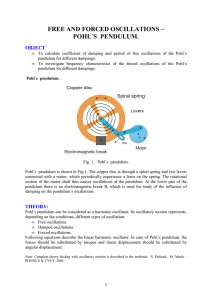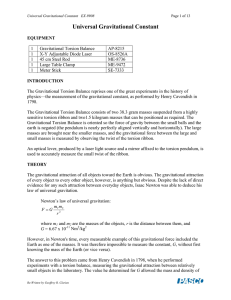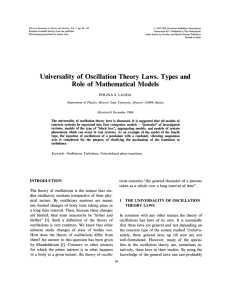1 Phy 3221 Due: February 23, 2011 Homework set # 6
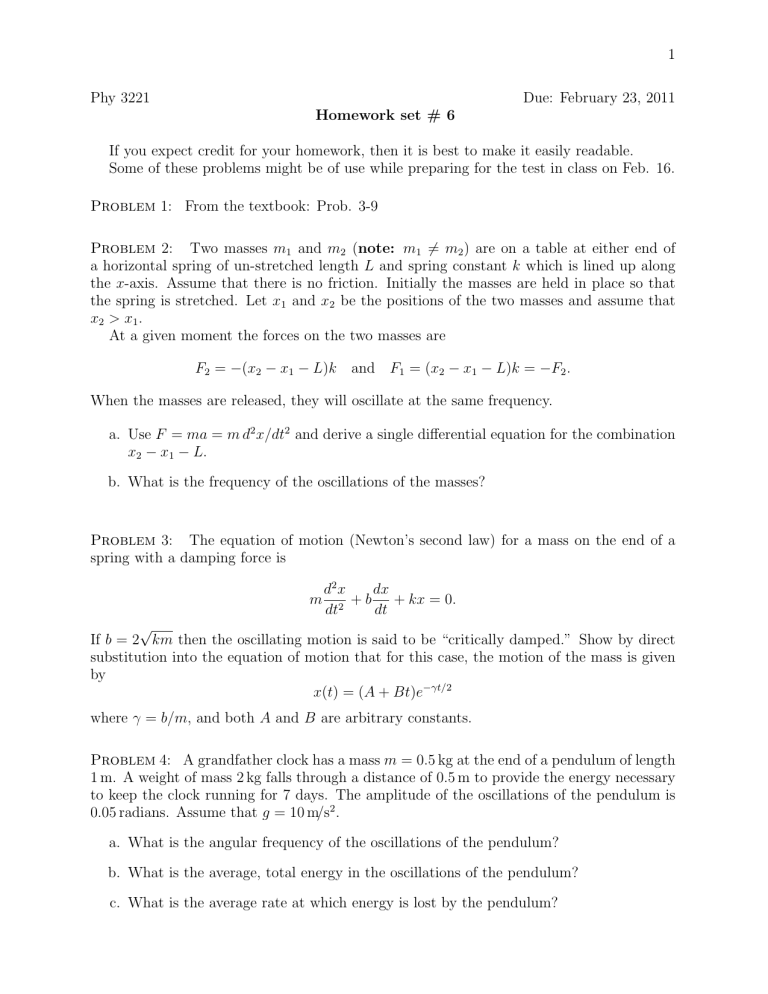
1
Phy 3221 Due: February 23, 2011
Homework set # 6
If you expect credit for your homework, then it is best to make it easily readable.
Some of these problems might be of use while preparing for the test in class on Feb. 16.
Problem 1: From the textbook: Prob. 3-9
Problem
2: Two masses m
1 and m
2
( note: m
1
= m
2
) are on a table at either end of a horizontal spring of un-stretched length L and spring constant k which is lined up along the x -axis. Assume that there is no friction. Initially the masses are held in place so that the spring is stretched. Let x
1 x
2
> x
1
.
and x
2 be the positions of the two masses and assume that
At a given moment the forces on the two masses are
F
2
= − ( x
2
− x
1
− L ) k and F
1
= ( x
2
− x
1
− L ) k = − F
2
.
When the masses are released, they will oscillate at the same frequency.
a. Use F = ma = m d 2 x/dt 2 x
2
− x
1
− L .
and derive a single differential equation for the combination b. What is the frequency of the oscillations of the masses?
Problem 3: The equation of motion (Newton’s second law) for a mass on the end of a spring with a damping force is m d
2 dt x
2
+ b dx dt
+ kx = 0 .
If b = 2
√ km then the oscillating motion is said to be “critically damped.” Show by direct substitution into the equation of motion that for this case, the motion of the mass is given by x ( t ) = ( A + Bt ) e
− γt/ 2 where γ = b/m , and both A and B are arbitrary constants.
Problem
4: A grandfather clock has a mass m = 0 .
5 kg at the end of a pendulum of length
1 m. A weight of mass 2 kg falls through a distance of 0 .
5 m to provide the energy necessary to keep the clock running for 7 days. The amplitude of the oscillations of the pendulum is
0 .
05 radians. Assume that g = 10 m/s 2 .
a. What is the angular frequency of the oscillations of the pendulum?
b. What is the average, total energy in the oscillations of the pendulum?
c. What is the average rate at which energy is lost by the pendulum?
2 d. What is the Q of the pendulum?
Note: The Q of a weakly damped harmonic oscillator is
2 π × total energy in the oscillator
Q = energy lost in one oscillation





